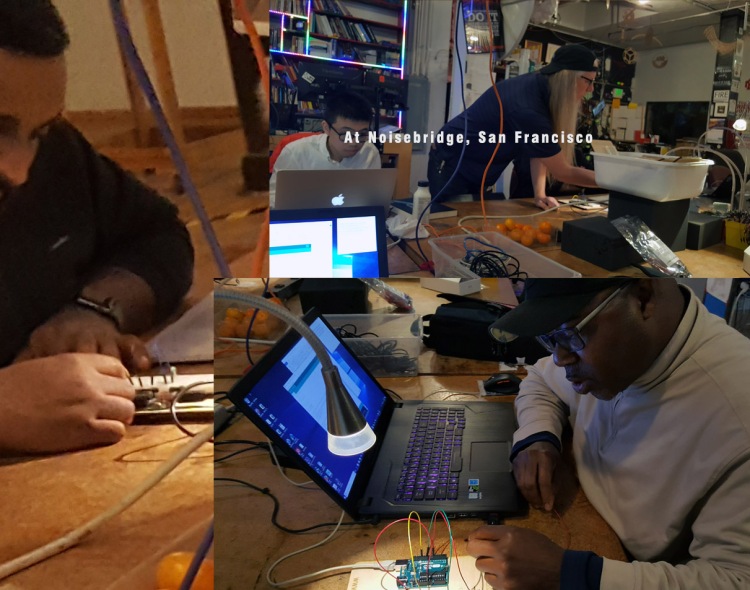For a while, I have been tinkering with micro devices and various sensors doing little projects. As I began to get serious with learning and understanding the functions and the relationship of Serial port communication, sensors, and micro devices to interactive projects, I began to seek help and expert knowledge including visiting Meet-Ups such as the Noisebridge in San Francisco. I was at the “Arduino for Newbies” workshop to expand my knowledge on how Arduino device can be implemented in the “Wear My Story” interactive project that I am working on. I worked on the elementary level ‘blink LED’ library and tested a few proximity sensor codes I found online.

The Noisebridge experience was useful because I met a few wonderful and helpful people there. The Noisebridge positions itself as a ‘non-profit, hackerspace for technical creative projects’. I like the idea that the space welcomes everyone with or without prior technical knowledge of the project they maybe interested in. I spent most of the evening connecting jumper wires from the breadboard to the Arduino device, installing Arduino Ide libraries and testing the indicated functions; i.e., blinking LED and using Ultrasonic sensor to measure distance. I decided to use the Ultrasonic sensor concept for the bigger project.
The Arduino Uno is an Open Source personal computer hardware with extended programming libraries or data samples (pre-written by someone else and made available to the public) that can be used in projects. The Arduino device is defined as a single-board microcontroller that provides ways to sense and control objects in physical space. The board has sets of analog and digital pins (14 total pins). These pins connect various other devices to the Arduino for functionality and operability. The serial communication happens via USB. It uses 3V and 5V power input respectively for various connections/device communication.

